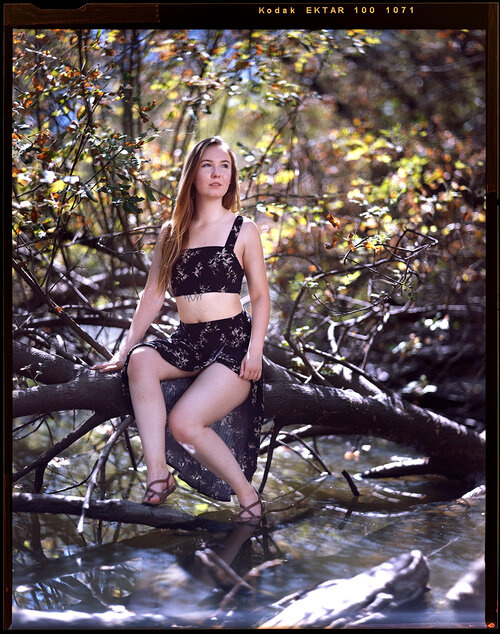Cart
You have no items in your shopping cart

Do you want to take better portraits? Do you enjoy shooting photos of people but you don't understand why they don't look the way you would like them to look? Here are Seawood's top 10 tips for getting started with making better portraits of people. These tips are easy and will make a huge difference in the quality of your images.
1. Short Depth of Field-
There are always exceptions to these rules, however typically good portraits have a very short depth of field. If you are not familiar with the term, this means that very little of the image is actually in focus. The main subject (the person's face) will be in focus, while the background and everything behind the subject is blurred or out of focus. This allows your eye to be drawn to the subject rather than being distracted by everything else around it. This means your f-stop or aperture should be at f4 or wider. F1.4, F2.8, F3.5 or F4.

2. Don't shoot in direct sunlight-
Many beginners think that more light equals the best time to take photos. This is false. The least flattering light on a person is in the direct sunlight. This creates hard light, which makes for harsh shadows and overblown highlights on the face. You want diffused light, which will spread more evenly and eliminate those harsh shadows. If you are shooting on a sunny day, look for shade. The best days to shoot outdoors are actually cloudy or overcast days. The best times of day to shoot are going to be either very early in the morning or very late in the afternoon. Basically the two hours where the sun is closest to the planet.
3. Use a long focal length-
Again, there are exceptions to this rule. Usually, if you use a longer focal length it will give you a better portrait than a wide angle. You will want to shoot with at least a 50mm lens, if not longer than that, like an 85mm or even a 200mm. This is because wide angle lenses will distort the face which is usually not flattering. The other thing that longer lenses will do is create a smoother "bokeh" effect. Bokeh is a term for the blur of the background.
4. Use artificial light or reflectors
Yes, even if you are shooting in natural light outdoors, do yourself a favor and use a reflector or a speedlite. The difference is phenomenal. Where you would have had a rather flat image in diffused light, you can add lots of texture and quality to the skin tones if you add a little artificial light to compliment the natural light. If you use a speedlite, use it off camera, not just mounted onto your hotshoe. The further from the lens the light sits, the more natural it will look on the person's face.
5. Pay attention to your background
While your background will be blurry, you should still pay attention to what is in it. If there are distracting colors and shapes, change your angle or move your model. Even with a blurred background you can have distracting objects that will take away from the subject.

6. Keep the eyes sharp!
The most critical part of a portrait is the eyes. Pay attention to the sharpness of the eyes. If the eyes are not in focus, it will deplete the quality of the image. Manual focus if you have to, or set your camera on single spot autofocus, focus on the eyes and then reframe.
7. Skin tones
A lot of the skin tone quality will come in with post processing. While shooting you'll want to make sure your white balance is correct and that you're shooting in RAW. If you shoot in JPEG you'll have much less room to play around with the color in Photoshop or Lightroom.
8. Expose for the highlights
The best setting for your light meter to be on for portraits is spot metering. You will want to spot meter the brightest area of the person's face and set your exposure accordingly. This way you will not blow out highlights on the face which will have no detail and therefore will never be recoverable in post processing. It is easier to recover detail from shadows than it is from highlights.
